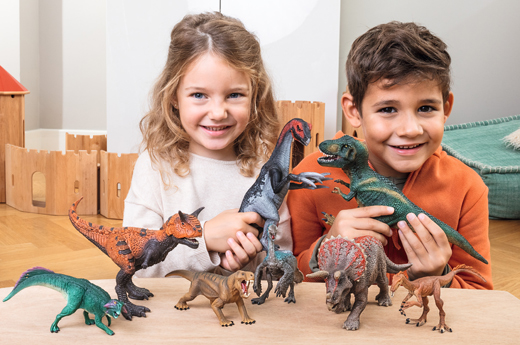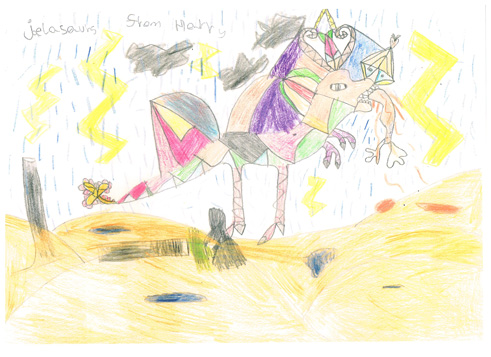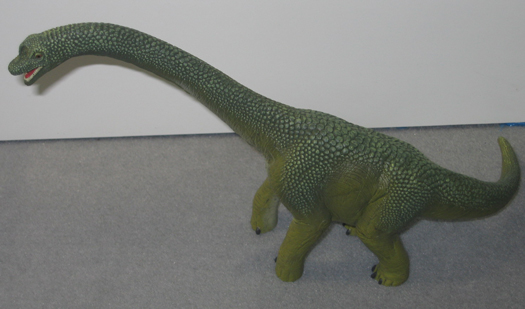As the summer holidays here in the UK draw to a close, we can reflect on all the amazing interactions we have had with young dinosaur fans. We seem to spend most of our time being corrected by budding palaeontologists, keen to point out gaps in our dinosaur knowledge. Many children develop a fascination for prehistoric animals. Indeed, some go on to develop highly rewarding careers in the Earth sciences. We are genuinely delighted, so pleased that they can develop their passion into a career. We are aware that many children on the autism spectrum develop a fascination with the Dinosauria. What is the link between dinosaurs and the autism spectrum? That is an excellent question.

Children playing with dinosaur and prehistoric animal models. Many children on the autism spectrum become obsessed with dinosaurs.
Dinosaurs and the Autism Spectrum
Every autistic person is different. However, the Dinosauria provides plenty of scope for exploration and learning. Dinosaurs have captivated the imaginations of young people for generations, but this fascination often runs particularly deep among individuals on the autism spectrum. The amount of facts associated with dinosaurs might be one motivation. Individuals on the spectrum can thrive on structure and predictability. Studying dinosaurs provides lots of scope for the comprehensive exploration of fossils, behaviours and anatomy. The extinct non-avian dinosaurs with their distinct names, classifications, and features, lend themselves to a deep dive into a structured yet imaginative realm.

A very colourful dinosaur drawing. Many children obsess on the Dinosauria and Everything Dinosaur receives many prehistoric animal drawings from young dinosaur fans.
Providing a Bridge for Social Interaction
We are not experts on autism, but we are contacted by many parents and guardians of autistic children. We try to offer as much support as we can. For example, we provide free prehistoric animal fact sheets, quizzes and dinosaur-themed teaching resources. We understand that for some children learning about dinosaurs can provide a valuable outlet for them allowing them to express the creativity. Drawings are sent to us, and we take the opportunity to provide supportive feedback and kind comments.
Moreover, dinosaurs can serve as an excellent bridge for social interaction. Sharing facts, engaging in discussions, or even participating in dinosaur-themed activities can create meaningful connections. In addition, for children on the spectrum, social interactions can be a little less daunting if they are comfortable with the topic being discussed. Sharing a fascination for all things dinosaur can enable the establishment of friendships based on mutual interest.
Some dinosaur models are great for sensory play. Back in 2017, we wrote an article praising the tactile elements of dinosaur toys. Our article featured the recently introduced Schleich Brachiosaurus figure.

The Schleich Brachiosaurus dinosaur model. A model that is great for sensory play. Is there a close connection between dinosaurs and the autism spectrum? Picture credit: Everything Dinosaur.
Picture credit: Everything Dinosaur
To read our article from 2017 about the tactile qualities of a Schleich dinosaur model: The Tactile Qualities of the Schleich Brachiosaurus.
Schleich, the German-based figure manufacturer has done much to champion creative, imaginative play. We too have a proud record of offering support and encouragement. Whilst we might not be knowledgeable in this area, we understand that there is a link between a fascination for dinosaurs and the autism spectrum.
Dinosaur Toys and Sensory Experiences
The sensory experiences associated with dinosaurs also play a role. From the tactile elements of dinosaur toys to the visual stimulation of documentaries and books, these features can be incredibly engaging. Many young people on the autism spectrum develop a passion for the Dinosauria. We try our best to nurture this interest, to encourage and provide support.
Understanding this passion can help us appreciate the unique ways in which people on the spectrum connect with their interests and the world around them.
Now it’s time to turn back to our current project preparing a new dinosaur fact sheet that will (hopefully) help fuel and sustain a young person’s interest in prehistoric animals.
The award-winning and user friendly Everything Dinosaur website: Dinosaur Toys.



No I think it’s something else as they also obsess about planets, stars etc it’s like real actual things, the universe, facts fascinations, I do not think it’s just sensory play, every single child on the spectrum has the exact same interests which actually goes away in adult hood there needs to be further investigation on why these subjects